Arriving at the busy airport just as many Muslims were returning from the Haj or pilgrimage to
We stayed at a wonderful 4 room guesthouse called Bamboo
Bamboo located very close to the kraton with delightful staff and delicious
breakfasts daily for only about $25 a night.
Normally when we get to a new city ,
we spend time discovering it and seeing some of the sights right away. We
couldn’t do that this time as we had already reserved an afternoon and evening
tour of Prambanan Temple Borobudur
Temple
We had planned to take a train or bus to Boro
but soon discounted that because of the difficulty getting to and from the bus
or train stations, etc. We hired the same driver, Jundi, who had picked
us up the night before which turned out to be a smart choice in terms of time
and money. We were able to negotiate a fair price for the 7 or so hour day trip
to Boro plus two more day trips outside of Jogja.
 |
Man carrying toys to sell on the street or in the market.
|
Jundi explained that most cars in Indonesia
are Japanese with Toyotas being the top seller. I was amazed seeing so many Toyota
brands we never see in the US
and Jundi said that many models are made exclusively for the Indonesian market.
He rented or leased his Avanza, the most popular Toyota
brand, from a friend, he said.
 |
| Horse and buggy mode of transportation was not uncommon. |
 |
| Tobacco drying on side of the road. |
 |
| Banana Tree. Only my brothers know our father used to call me Anna Banana,
Photos from Candi Borobodor:
|
 |
Boro was abandoned soon after its completion with the decline of Buddhism and the shift of power to East Java and was forgotten for centuries. It was only in 1815 when Sir Thomas Raffles (remember that name for later!) governed Java, that the site was cleared and the sheer magnitude of the builders’ imagination and technical skill was revealed.
Climbed many steps and walked around each of the levels to
see each of the stupas or small shrines that are part of Boro. At least the narrow, steep steps had railings.
The sculptors carved a virtual textbook of Buddhist doctrines and many aspects of Javanese life 1000 years ago – a continued procession of ships and elephants, musicians and dancing girls, warriors and kings. |
| We were very surprised how few people there were at Boro as we’d read we needed to be there at 7:30 am to avoid the massive crowds. Sure didn't see anything like that today. |
 |
| View of the very hazy surroundings. |
 |
Some of the bell shaped stupas had diamond shapes while others had square shapes.
|
 |
| Young adults with ‘Say No to Drugs’ campaign. |
 |
| Bet we saw many of the 432 serene-faced Buddha images although we sure weren't counting them! |
 |
| Taking a break before facing more steps to the top. |
Chatted with this German woman who was measuring the amount of water
in the stones as part of a German funded project through UNESCO. This was her seventh time at Boro and she always measures the same stones to detect the water’s
migration paths and to figure out where it’s coming from. An internal drainage
system was installed in 1975, she told us. That method would not be done now
because the only way to get at it to make repairs would be to take apart Boro
stone by stone.
 |
| First carving we saw with an animal on it. I just wonder whom we thought of! |
 |
Surprised there were only security guards at the stairwells
considering what an incredible religious monument it is.
|
 |
| I wonder how many of the 1460 narrative panels and 1212 decorative panels on the different levels we ended up seeing. |
Borobudur certainly doesn't have the same stellar or can't miss reputation on the international travel circuit as Cambodia's Angkor Wat but, in my opinion, it certainly was on a par with the central temple at Angkor Wat. A big plus for us too was the absence of crowds at Boro compared to the madhouse at Angkor Wat although I understand weather and the tourist season may change that.
Walking back to meet our driver:
 |
| Blurry because I didn't have/take the time to focus as we walked quickly in order to meet Jundi at the arranged time! |
We could only exit Boro through a maze of alleys just lined
with shops. I had known we needed to factor in the 30 minutes to walk, without
stopping to browse or buy, through the maze but Steven scoffed at me when I
told him about the length of time it would take. Guess who later ate humble pie!
 |
| Now, doesn't THAT sound like a tremendous cruise to take! |
 |
| Some of the stones still needing to be put back up after the devastating earthquake 9 years ago. |
 |
Members of the gamelan orchestra cleaning their instruments.
|
 |
Thought we were finally at the end when we saw light at the
end
of the tunnel but, no, just a breath of fresh air before entering another
maze.
|
 |
Rolex watch – isn’t it just what you always wanted?!
|
Finally met up with Jundi again.We told him we wanted to go next to a small village just 4kms from Boro called Karang that is known only for its tofu making.
 |
Jundi told us every village in the area has its own mosque.
|
 |
Sign with 'Welcome to Tofu Home Industry'; tofu is known as tahu
in
|
Each home kitchen in the village produces about 50kgs of tofu daily using the traditional methods of cooking in coconut oil over a wood fire. Jundi had been taking people for years to Boro but he had never heard of Karang.
He asked some locals who said we could stop at any of the
houses and see if we could watch people making tofu then. Luckily one family
welcomed us into their home where we watched the tofu being fried and then ready for sale in the market for a good 30 minutes. Alexander – obviously
could only think of you here!
This woman mentioned that the soya beans are imported from the US , soaked in fresh water and made into white blocks. The 7 hour process from soya beans to the blocks starts at 4 each morning.
In the afternoons they fry each block in the sizzling oil
for 5 minutes til a deep golden color and the it is dried for a few minutes
before being placed in the white drum.
 |
| Trays of tofu awaiting frying. |
 |
| Still more trays that needed cutting into blocks first before being fried. |
 |
| The family talking with Jundi, our driver and, luckily, interpreter. |
 |
Indonesians eat the
|
 |
| Photos of their home as we walked through. |
Again, just a few kms away from Karang, we stopped at the small village
of Ngilopoh
Photos of nearby Nglipoh:
This potter was making ashtrays, small bowls, etc outside her front door for sale in the market. We only stayed a few minutes there.
Back in the car to see Candi Pawon, a very small temple with no other visitors or tourists.
En route to Candi Pawon:
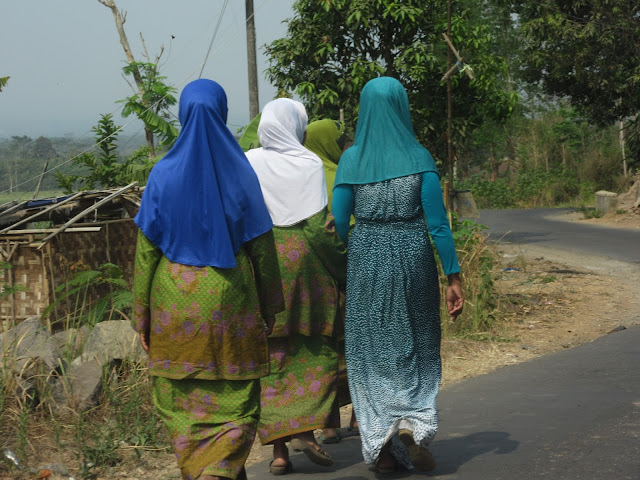 |
| We had seen these same women as we entered Nglipoh. |
 |
| Starting to look the same as some of the others, don't you think! There was only the one stupa at Candi Pawon. |
I caught up with Steven who had wandered into a small shop
where he was entranced by very old as well as new dolls in native costume from
west Java.
Photos of doll/souvenir shop:
(As I'm writing this in our hotel room in Saigon, we're listening to British jazz singer Zara McFarlane perform right across the street. It feels like we're having our our own private concert! Lil, I think you'd love her music. Wonder if you've heard of her?)
The woman showed us pair after pair of different dolls that it soon became difficult to decide which pair to buy. We ended up choosing 2 male and female dolls that will look lovely at home.
Drove next to see Candi Menduk but we spent a long time at
the stunning Menduk Buddhist Monastery first.
The Sakyanuni Buddhist Statue, above and below, was a gift from Zenyogi Buddhist Temple in Nara, Japan 'to strengthen the brotherhood of Japanese and Indonesian Buddhists.'
Steven and I really found the Mendut Buddhist Monastery a place of incredible beauty and serenity. Didn't see any monks though.
Photos from Candi Mendut -the LAST temple of the day:
 |
There were statues of Boddavistas to left and right of Buddha.
|
 |
| Don't recall the insides of the other temples looking anything like Candi Mendut. |
 |
| Saw fish pond after fish pond on this stretch of road back to Jogja. |
 |
| Then broom store after broom store. |
 |
| Carrying sugar cane. |
 |
| Roadside restaurants like this are typical; this one served the tahu and tempe, both of which we saw earlier in Karang. |
On the way home, we discussed with Jundi his fees for 2
other day trips from Jogja we wanted to go on as we had not made any other
plans yet. He had been a good driver and guide so we preferred to stick with
what we knew instead of starting anew.
 |
The left wheel on this cart was SO wobbly I kept expecting to come right off!
|
 |
| The sign told people not to support children who beg. Only wish the Cambodian government had something like that in effect too as there are child beggars everywhere. |
Loved the way the traffic lights are all timed so you know
exactly how much time you have before the light turns green. A good many of
the red lights were on an 85 second timer whereas the green was MUCH shorter.
Jundi joked that he knew how much time he had to eat or text!
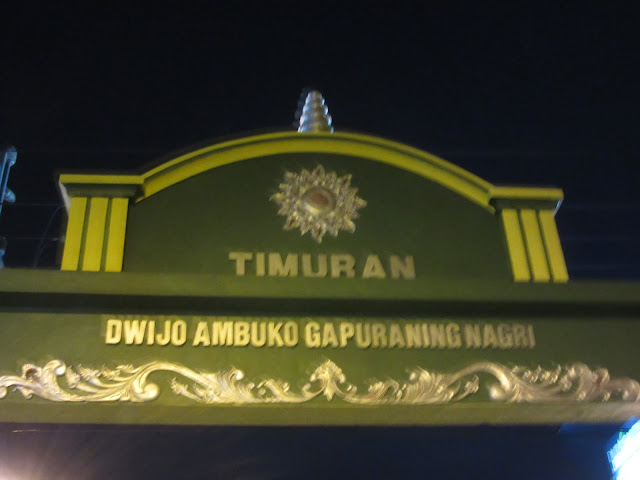 |
| Finally back to our street at long last! |
Dinner at a
restaurant a few blocks from the hotel. Musicians moved from one restaurant to
another after playing a few songs in each and collecting tips. They were playing John Denver’s 'Take Me Home, Country Roads' here. Think we'll decide to stay on the road a while longer though!
Posted on 10/11 from Saigon, Vietnam.


























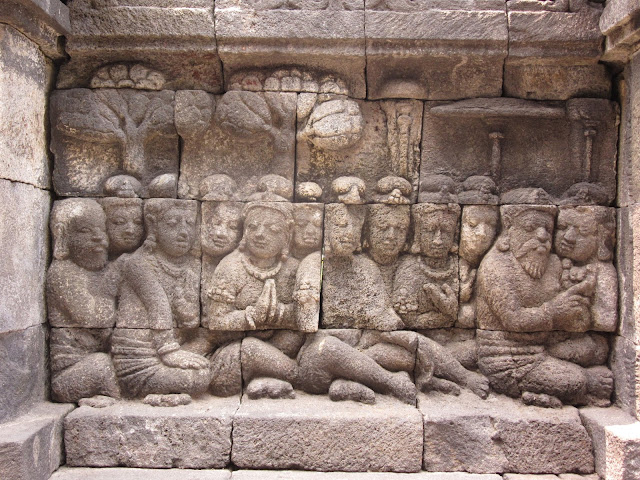












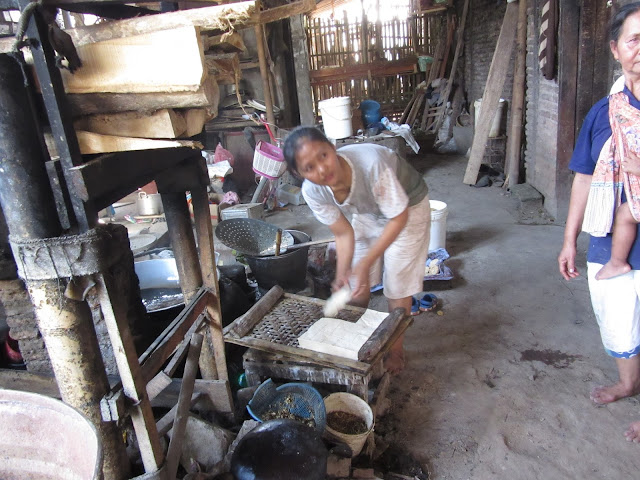




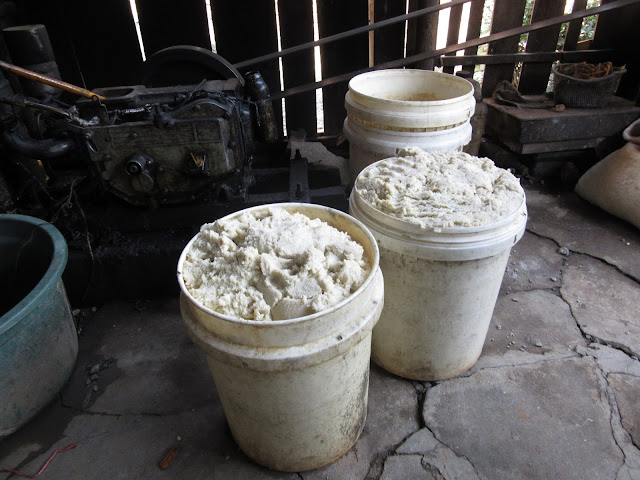

















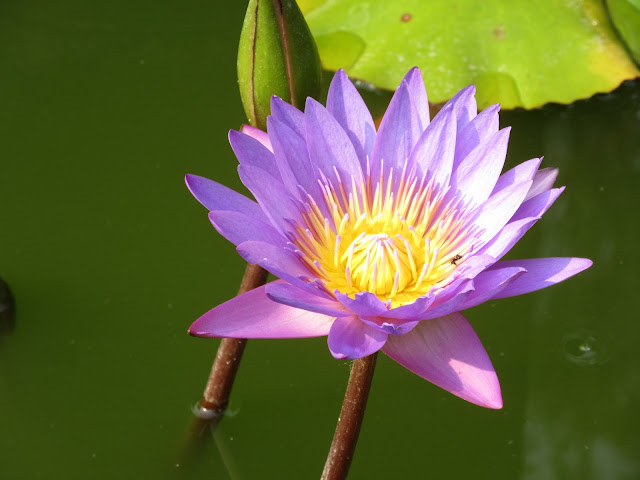



















No comments:
Post a Comment
We love to hear your comments!